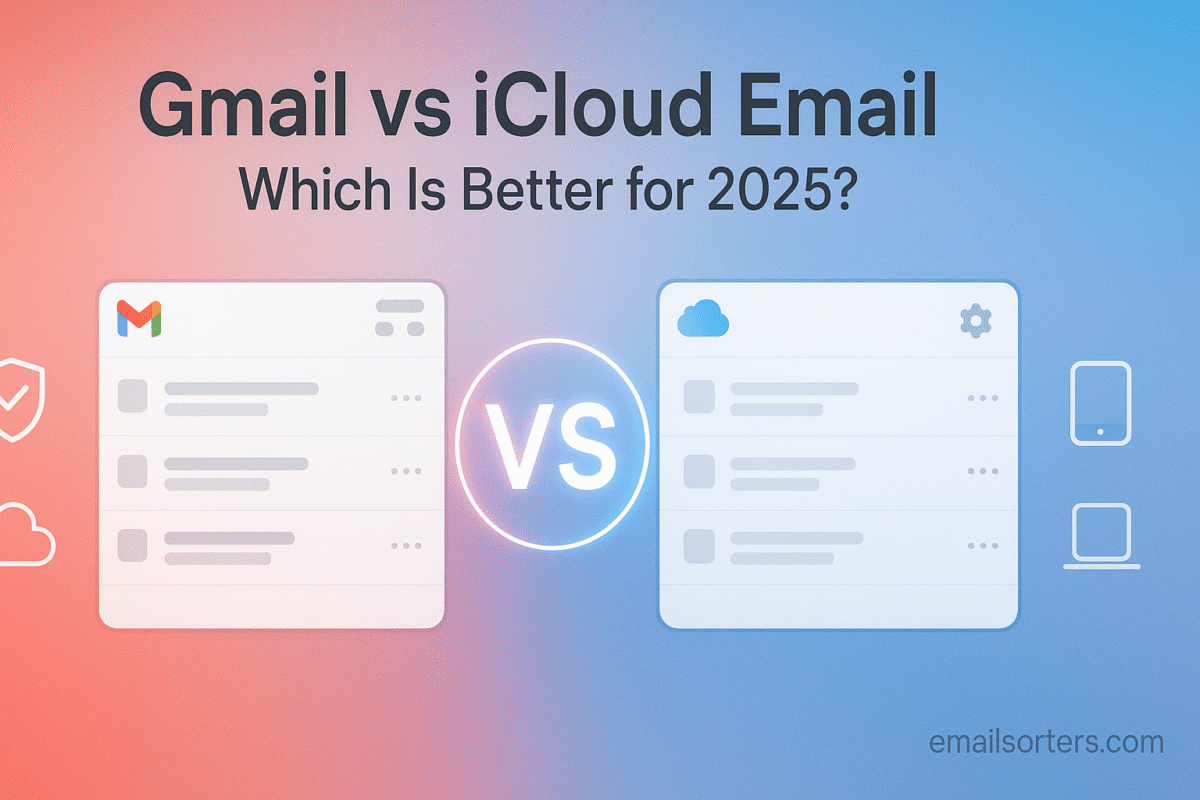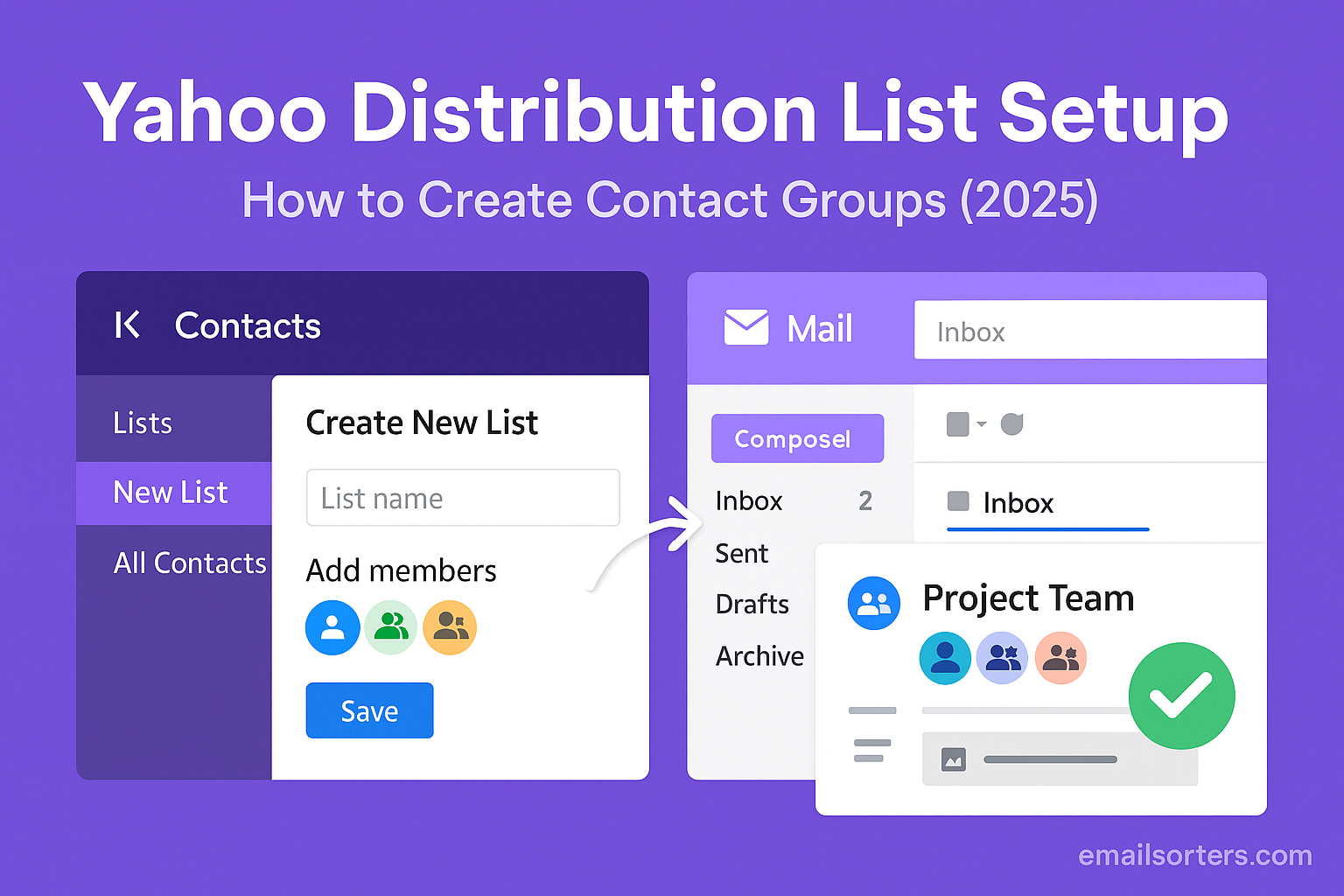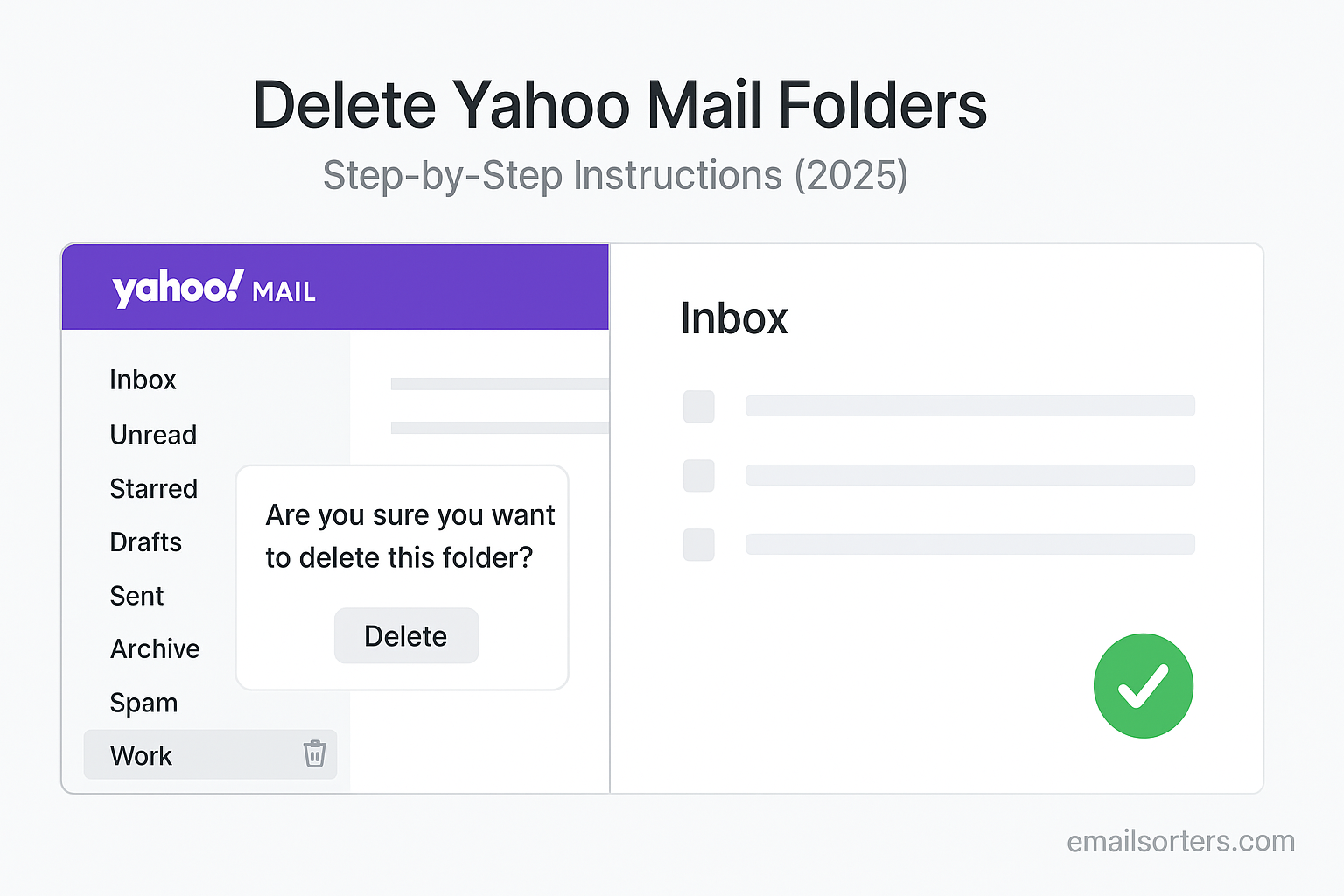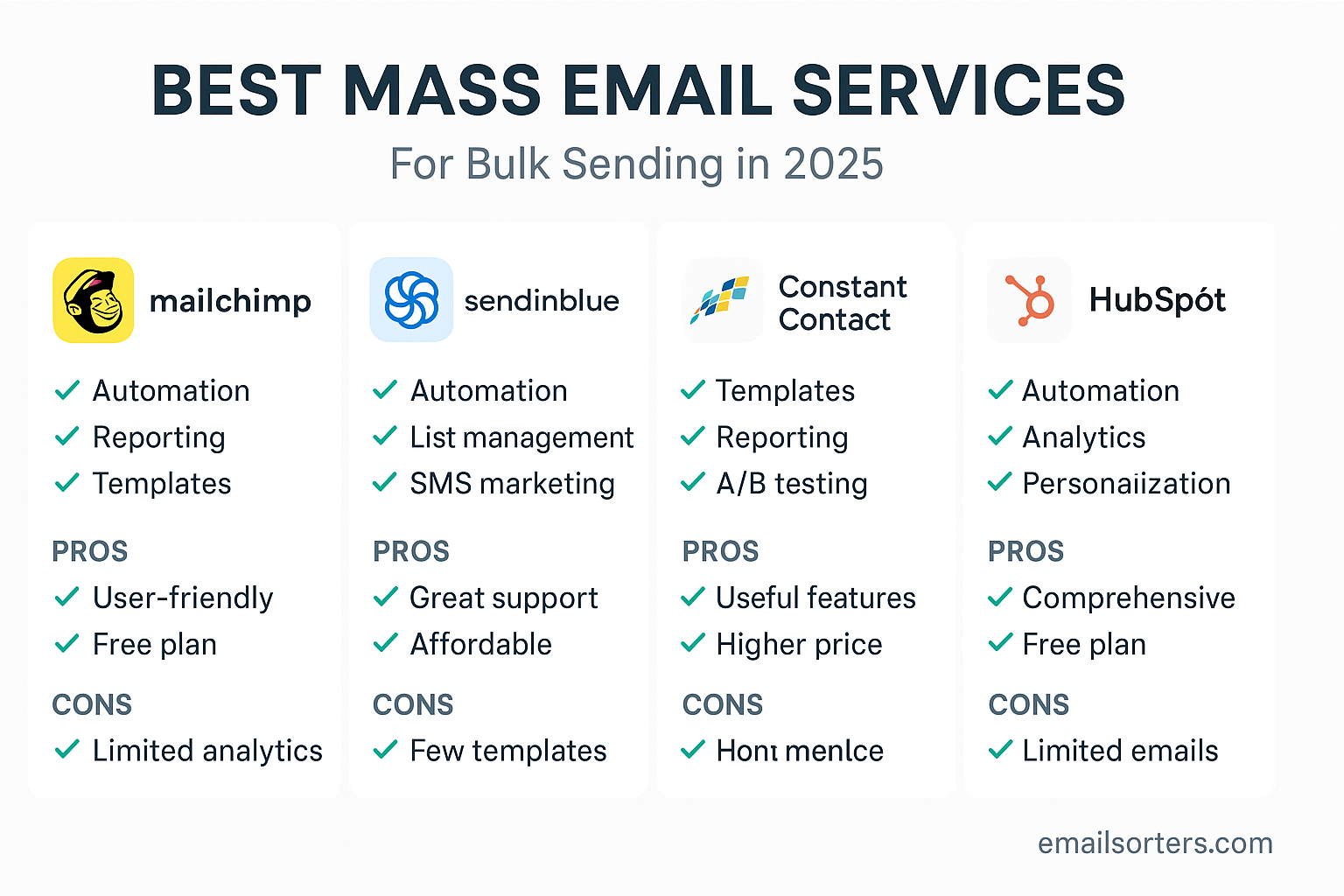Gmail vs iCloud Email, two big names, but which one really fits your needs in 2025? Gmail dominates with powerful search, endless integrations, and Google’s full ecosystem. iCloud Email, on the other hand, keeps things clean, private, and deeply tied to Apple devices.
The tricky part? Both have strengths, and choosing the right one depends on what matters most to you: storage, privacy, ease of use, or cross-platform flexibility.
In this guide, I’ll break down Gmail vs iCloud Email side by side, covering features, pros, cons, and what’s new in 2025. By the end, you’ll know exactly which one is better for you. Let’s dive in.
The Core Philosophy: Data vs. Devices
To understand the differences between Gmail and iCloud, one must first understand the companies behind them. Google is fundamentally a software and data company, while Apple is a hardware company. This core distinction shapes everything about their email services.
Gmail’s Cross-Platform, Data-Driven Approach
Google’s mission is to organize the world’s information and make it universally accessible. Gmail is a perfect embodiment of this. It is designed to be a powerful, feature-rich service that works exceptionally well on any device, anywhere in the world. It is accessible through a best-in-class web interface and top-tier mobile apps for both iOS and Android. In exchange for this free, powerful service, Google leverages anonymized user data to improve its AI features and deliver personalized advertising across its platforms.
iCloud’s Hardware-Centric, Privacy-First Model
Apple’s primary business is selling premium hardware like the iPhone, iPad, and Mac. iCloud Mail is not designed to be a standalone competitor to Gmail but rather a value-adding feature that makes Apple’s hardware more appealing. Its goal is to create a seamless, integrated, and effortless experience for users who own multiple Apple devices. Apple has also made user privacy a core tenet of its brand identity. They explicitly state that they do not scan email content to serve ads, positioning privacy as a key differentiator.
Platform Accessibility and User Interface
How and where you access your email is a critical factor. Here, the two services diverge significantly, with one prioritizing universal access and the other prioritizing native integration.
Gmail: Accessible Everywhere
Gmail’s greatest strength is its universal accessibility. The web interface is powerful, fast, and packed with features, making it the gold standard for browser-based email. It is consistent and reliable regardless of whether you access it on a Windows PC, a Mac, or a Chromebook. Furthermore, the Gmail mobile app is a polished, full-featured client available for both Android and iOS, providing an excellent experience on any smartphone.
iCloud: Best on Apple, Limited Elsewhere
iCloud Mail is designed to be used primarily through the native Apple Mail app on an iPhone, iPad, or Mac. In this environment, the experience is seamless, clean, and perfectly integrated with the operating system. However, its accessibility outside the Apple ecosystem is limited. While there is a web interface at iCloud.com, it is slow and lacks many of the features of the native apps. Setting up iCloud Mail on an Android device is technically possible but requires a cumbersome manual setup process that is not officially supported.
Storage: The “Free” Tier Reality Check
Both services offer a free tier of storage, but the amount and how it is used are vastly different. This is often the point where users are pushed toward a paid subscription.
Gmail’s Generous but Shared 15 GB
Gmail provides a generous 15 GB of free storage with every account. However, this storage is not exclusively for email. It is pooled across your entire Google Account, meaning it is shared with your files in Google Drive and your photos and videos in Google Photos. For users who take a lot of pictures or store large files in the cloud, this 15 GB can be exhausted quickly, necessitating an upgrade to a paid Google One plan for more space.
iCloud’s Limited 5 GB: A Gateway to iCloud+
Apple provides a much smaller 5 GB of free storage with every Apple ID. Like Google, this storage is shared across all iCloud services, including iCloud Drive, Photos, and, most importantly, device backups. A single iPhone backup can easily exceed 5 GB. This makes the free tier insufficient for almost any active Apple user, effectively making the paid iCloud+ subscription a near-necessity to fully use their devices.
Core Features and Productivity
Beyond sending and receiving mail, modern email services are expected to offer features that enhance productivity and help manage the daily influx of messages.
Gmail’s AI-Powered Feature Set
This is where Gmail truly shines. It is packed with intelligent features powered by Google’s advanced AI. Its search functionality is second to none, allowing you to find any email with incredible speed and precision. Features like Smart Compose and Smart Reply suggest text as you type, saving significant time. The tabbed inbox automatically sorts incoming mail into categories like Primary, Social, and Promotions, keeping your main inbox clean. The deep integration with Google Calendar and Google Meet also allows you to manage your schedule and meetings directly from your email.
iCloud’s Focus on Simplicity and Core Functionality
iCloud Mail takes a more minimalist approach. It handles the core functions of email—sending, receiving, and organizing—with clean efficiency. The interface is simple and uncluttered, which many users appreciate. However, it lacks the advanced, AI-driven convenience features found in Gmail. There is no Smart Compose, and the search function, while adequate, is not as powerful or fast as Google’s. The focus is on providing a reliable, straightforward email experience without unnecessary complexity.
Privacy and Security: The Deciding Factor for Many
For an increasing number of users, the way a company handles their data is the most important consideration. This is the clearest point of differentiation between Gmail and iCloud.
Gmail’s Robust Security vs. Data Personalization
Google has a world-class security infrastructure that works tirelessly to protect users from spam, phishing, and malware. The security features in Gmail are excellent and highly effective. However, it is no secret that Google’s business model relies on data. While they no longer scan the content of emails to personalize ads, they do track metadata and other user activity across their services to build user profiles for targeted advertising.
iCloud+ and Its Suite of Privacy Tools
Apple has built its brand on a commitment to user privacy. With the paid iCloud+ service (which starts at a very low monthly price), users gain access to a powerful suite of privacy features. Hide My Email allows you to create unique, random email addresses that forward to your main inbox, so you never have to give out your real email to websites. Custom Email Domain lets you personalize your email address. While not directly an email feature, iCloud Private Relay encrypts your web browsing traffic, further protecting your online activity. For privacy-conscious users, these features offer immense value.
Organizing Your Inbox: Folders, Labels, and Search
Both services provide tools for keeping your inbox tidy, but they use different organizational philosophies.
Organization in Gmail
Gmail famously uses Labels instead of traditional folders. A single email can have multiple labels, making it a more flexible system than placing a message in a single folder. Learning how to move emails to folders in Gmail using this label system is key to mastering the platform. The primary organizational tool, however, is search. Google’s philosophy is that you should be able to find anything instantly. For users needing to locate specific old messages, understanding how to find old Gmail emails with advanced operators is incredibly powerful.
Managing Contacts and Clutter
Both platforms offer robust contact management that syncs across devices. Over time, however, contact lists can become cluttered with old, irrelevant entries. For Gmail users, knowing how to delete Gmail contacts is an important housekeeping task. For managing the sheer volume of email on any platform, some users turn to third-party solutions. Services from companies like Clean Email, for example, offer advanced tools to help automate inbox cleaning and organization.
How These Services Compare to the Wider Market
While Gmail and iCloud are two of the most popular choices, they exist in a market with other long-standing providers.
Standing Out from Legacy Providers
The key differentiator for both Google and Apple compared to older services is the depth of their ecosystem integration. A look at an AOL Mail or Yahoo Mail review shows that while they are solid email providers, they do not offer the same level of seamless integration with a suite of productivity tools or a hardware lineup. This ecosystem-based approach is what defines the modern email experience.
The Final Verdict: A Tale of Two Ecosystems
The choice between Gmail and iCloud Mail is not about features alone; it is about committing to an ecosystem. The “better” service is the one that fits most naturally into your existing digital life and aligns with your personal values on privacy.
A Summary for Your Decision
This checklist can help you decide which service is the right fit for you based on your priorities and how you use technology.
- Choose Gmail if: You use a variety of devices, including Windows and Android. You want a powerful, feature-rich web interface and the best search capabilities in the industry. You are a heavy user of Google Drive, Docs, and Calendar. You are comfortable with Google’s data policies in exchange for a free, high-powered service.
- Choose iCloud Mail if: You are primarily or exclusively an Apple user (iPhone, iPad, Mac). You place the highest value on privacy and are willing to pay a small monthly fee for enhanced features like Hide My Email. You prefer a simple, clean, ad-free email experience. You need seamless and automatic integration across all your Apple devices.
Conclusion
In 2025, the debate between Gmail and iCloud Mail is clearer than ever. They are two excellent services catering to two distinct types of users. Gmail offers unparalleled power, flexibility, and intelligent features, making it the ideal choice for those who value cross-platform functionality and a data-driven experience. iCloud Mail offers unmatched privacy and seamless integration with Apple hardware, making it the superior choice for those embedded in the Apple ecosystem who prioritize data protection above all else. The best email service is the one that feels like a natural extension of the technology you already use and the values you hold.




